Most tutorials about using crackle medium refer to using it on wood, almost never for papercrafts. Since paper and cardboard are my material of choice, I experimented on using crackle medium for my craft projects, specifically for the little cardboard houses or Putz houses.
If you want to make your own crackle paint using white glue, here is my tutorial on DIY crackle paint.
Textured siding has always been an important feature of Putz houses. Even the original Japanese Putz houses had textured siding - such as gravel or sand mixed in with the paint or the famous "coconut" coating made from wheat or rice straw. My favorite siding material is crackled siding made using crackle medium or even just plain glue.
I'll show you how to do it.
You will love the way it looks on the little cardboard houses.
Use Crackle Medium to Make Crackled Siding on Halloween Houses
Easiest Way to Make Crackle Paint Siding
There are a number of ways to make crackle paint as siding for little houses, but using a crackle medium is the easiest without buying specific crackle paints in each color.
This post contains some affiliate links for your convenience. Click here to read my full disclosure policy.
Crackle Paint Siding Materials:
- Crackle Medium - various brands, this is one example you can find easily
- Background Material - cardboard or card stock
- Paint
- Paintbrushes
Crackle Medium or Crackle Glaze or Crackle Paste??
- Crackle medium is sometimes called Crackle Glaze, but you have to be careful of the terminology. Often crackle glaze goes on top of the project to make surface crackles that can be distressed, but does not actually make the paint crack.
- The two products I have been using both work between layers of paint to make the paint crackle, but one is called Crackle Glaze and one is called Crackle Medium. These two particular products work the same way.
- You also have the option of CRACKLE PASTE which is a thick paste that makes a crackled surface. This is my favorite brand. Crackle paste is easy to use.
- Put your glasses on and read the tiny, tiny print on the side of the bottle to see what kind of product you have.
Choose Your Background Material for the Siding
- Sometimes I use a heavy card stock 65# or higher, but most of the time I use the same kind of cardboard that I use to make the houses. If you use cardboard, you will have to color the edges of the cardboard after you cut the material into strips to prevent the raw edge from showing through.
Paint the Background Color
- You do want to paint your background color on even if you are using colored card stock. This is important for crackling process to occur. I often paint the backgrounds black because many of my house projects are for Halloween, but you can use any background color that will contrast with the top coat. Allow the paint to dry. You can dry it with a heat tool if you are in a hurry. An even layer of gesso dries in about 5 minutes which allows me to eliminate the extra drying step.
Apply Crackle Medium
- Apply a thin layer of crackle medium. You can dry this with a heat tool, but it also dries very fast so it's not usually necessary. Crackle medium is readily available at craft and hobby stores. You can also use Elmer's Glue-All as a crackle medium. Here is the tutorial on using Elmer's Glue-All instead of crackle medium.
Apply a Top Coat of Paint
- Choose a water-based paint type with a low sheen in a contrasting color to the background. Very shiny paint will not crackle appropriately. I used white gesso or Tim Holtz paints for the examples shown here. Paint it on thinly in long strokes if you want small, fine crackles and allow it to dry without heating. Don’t go over the paint more than once because it interferes with the crackle process. If I paint a long stroke and miss a section, I do go back and paint over it lightly.
- For my little houses, I do want fine crackles to match the scale of the house so I don't do anything to hurry the drying process along. Fine crackles develop a little more slowly than large crackles.
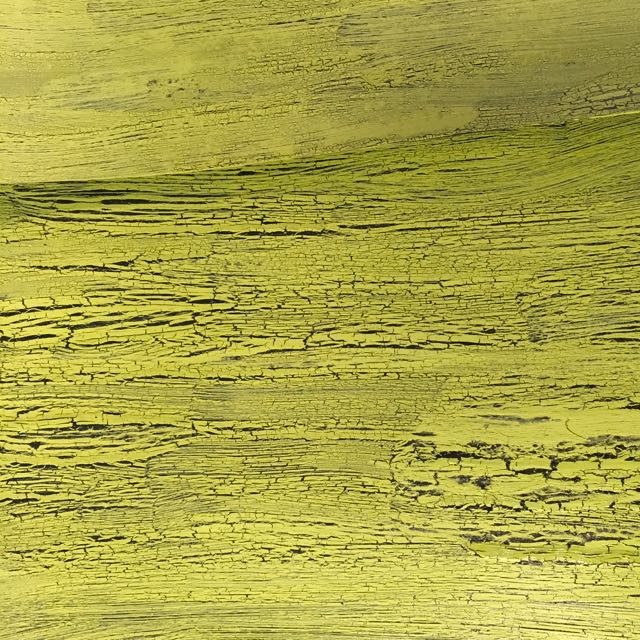
Cardboard coated with crackle medium and green paint for the siding for the Davenport Green Halloween house
Cut into Strips for Your House
- Cut into strips for siding or fencing or windows or whatever embellishments you're making. I generally cut my strips on the guillotine paper cutter less than ¼ inches wide. While I try to cut them evenly, but they often end up being a little crooked which works fine on my Halloween houses. I always edge each side of the strips and the end cuts with my background color so raw cardboard won't show. When I am making Halloween house, generally each piece is edged in black. On Gus the Ghost's house, I used Blueprint Sketch and Wilted Violet distress oxide inks as well as black paint to edge each piece.
It is simple process to make this crackle siding and adds such a wonderful detail to your papercraft project. BUT it does take time to apply it to your project.
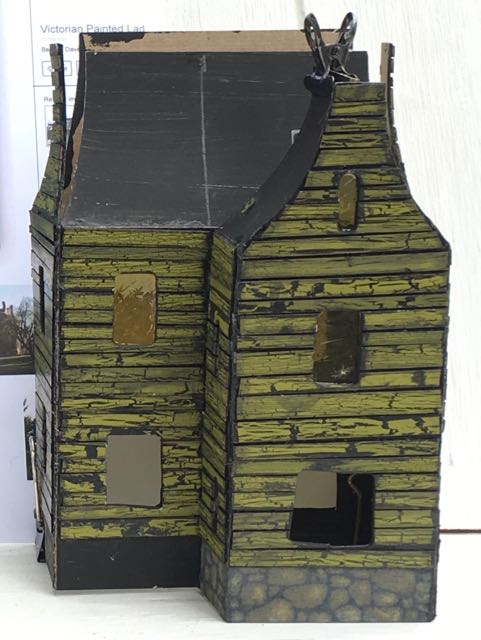
House in progress with crackle paint siding made with crackle medium and overcoat of Tim Holtz Peeled Paint distress paint. The name of this shade is perfect, isn't it?
You can buy ready made crackle paint in any shade you want at paint stores and hobby stores, but I like to make my own so I can vary the colors. I don't need the additional storage problem of having multiple cans or jars of various colors of crackle paints sitting around. I have enough paint already. (Introduction at Craft Hoarders Anonymous: Hello, my name is Lucy. I am a craft paint hoarder.)
As a result I continue to happily make my own crackle paint siding using the process outlined above. I am delighted with the results. Let me know if you try making some crackled siding for your paper projects.


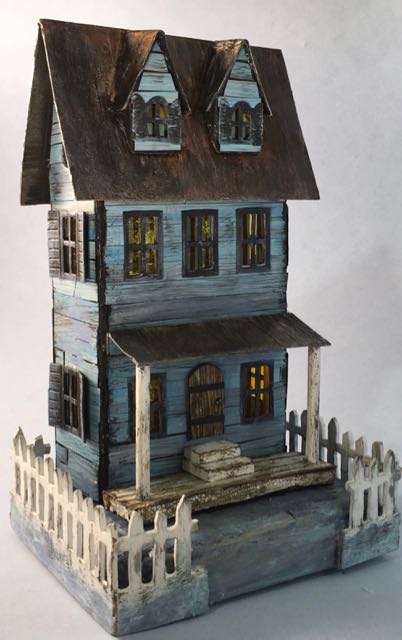
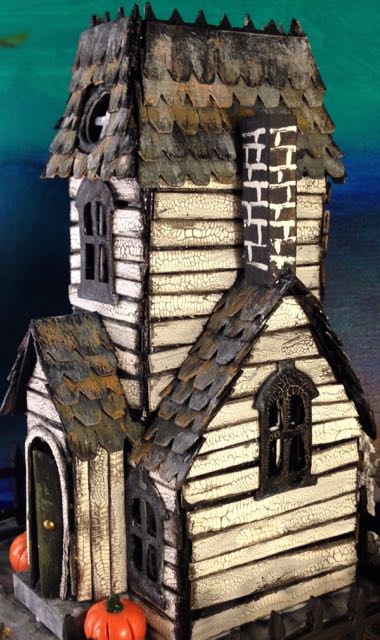
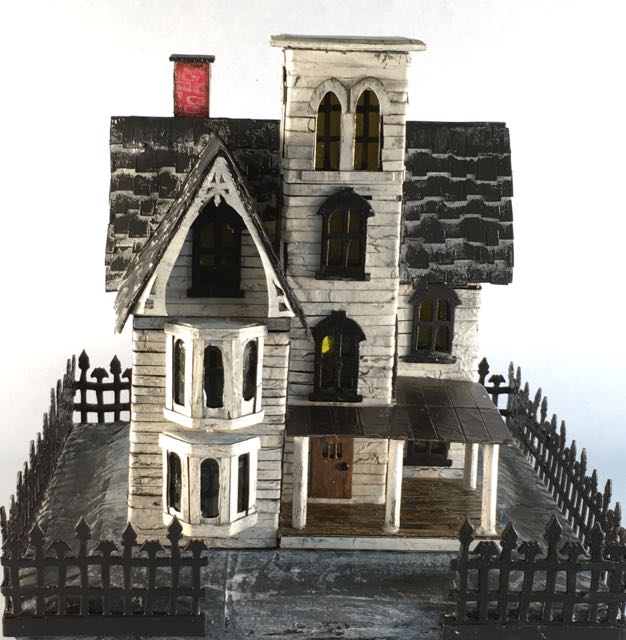
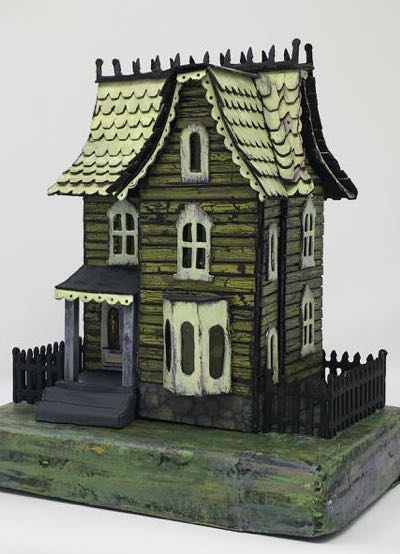
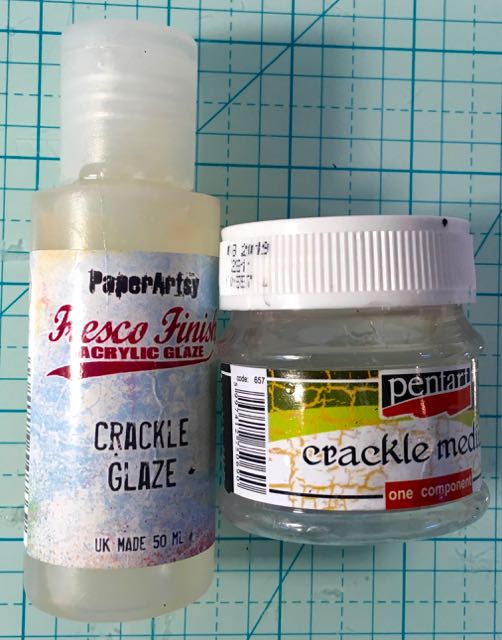
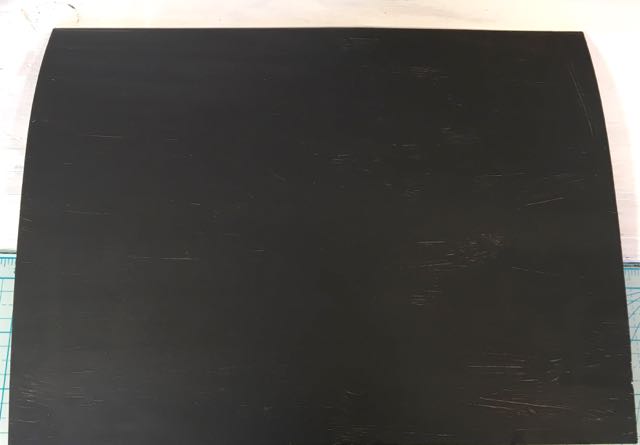
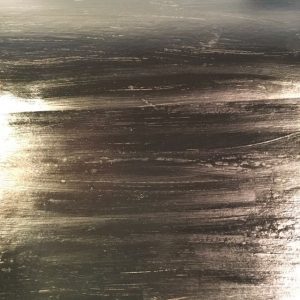
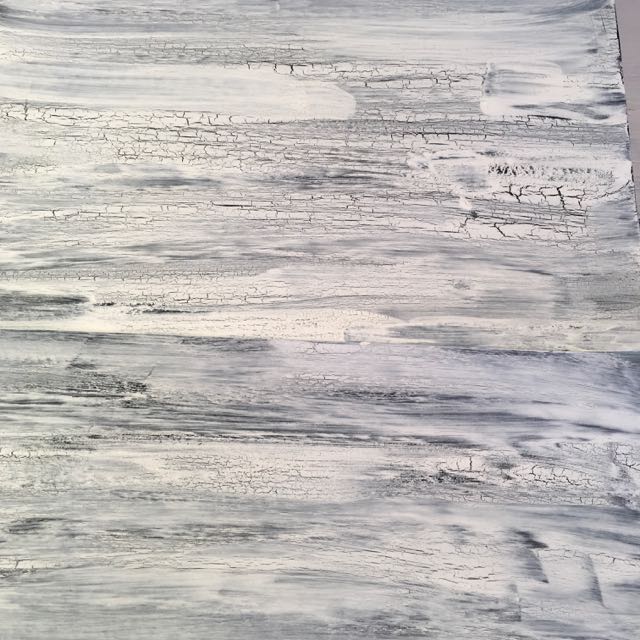
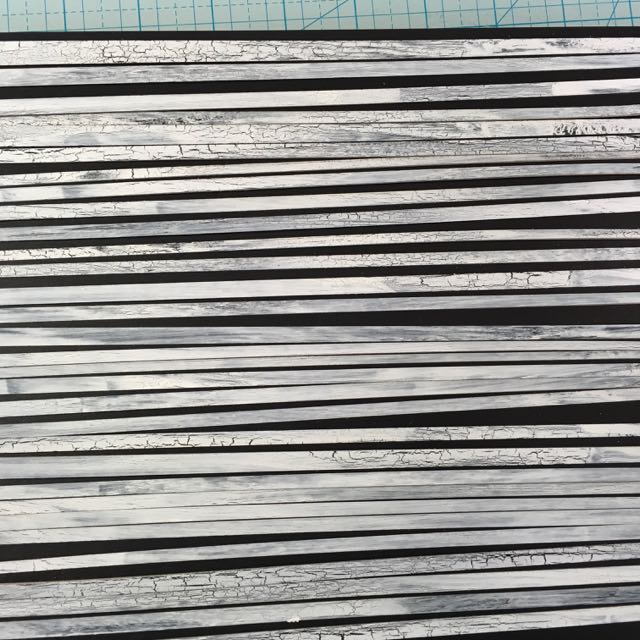
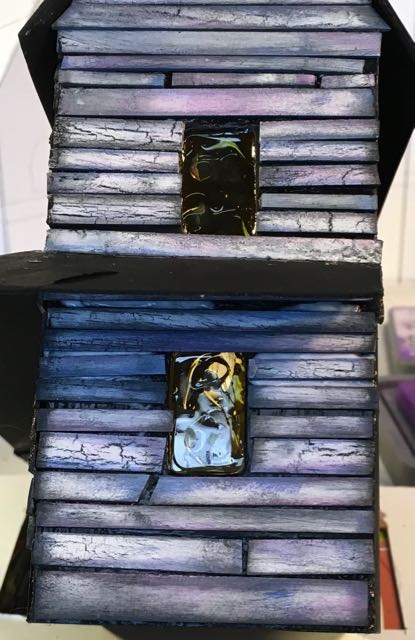
Jess
Have you ever used it as a puzzle saver? I want to save a puzzle but give it an antiqued finish.
Lucy
No, I haven't done that. It might work. Maybe use a regular puzzle saver glue on the back of the puzzle and then a crackle medium on the front. That might work.
Jess
I’ll try it. Thank you. I love the haunted houses you make!
Leone Evrenos
Hi there!
I am in the process of using Pentart 2 part crackle glaze on a small paper
Arthur Rackham fairy print onto a wooden box. I put the first part on and left it
overnight to dry. This morning I have put the second part on. Do I have to wait
till that's dry before I see any cracks start to appear? This is my first attempt!
Karin
THANK YOU.... am an American locked down (covid and very bored) ) in France. Have painted (oil) in the past... VERY interested in crackle. My dog is sick of me and refuses to learn how to play cards. So...out came the paints ....but bored with oils. Will look at your site again. Thank you....will learn more about what each product does... glaze, medium, paste. A little confusing. Merci Peggie.
Lucy
Peggie,
I don't really know the difference between the glaze, medium, and paste. All I tried to figure out was which one works better. The cheapest alternative is the white glue and then paint. I think the medium works best, but is hard to find.
And I hope you can find some projects on my blog. Mostly, my stuff is made with cardboard, paint, and glue. At least those supplies aren't hard to find.
Lucy
Peggie Drobile
Love your houses!
Lucy
Thank you, Peggie.